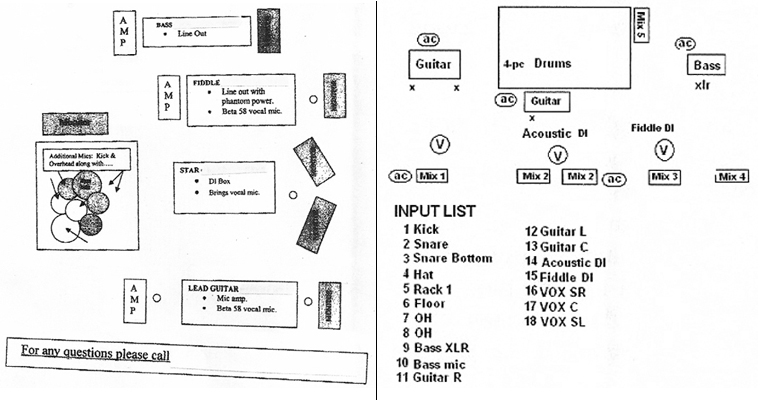
System Requirements
Loudspeakers, amplifiers, crossovers and snake arc the first line.
Many mix engineers will specify which brands of loudspeakers they prefer and occasionally, which ones they hate.
The idea is to impart what level of loudspeaker is required.
For example, for an arena show, a line array may be indicated, but for a flute recital, loudspeakers on sticks are most likely the more appropriate option.
Note here that the artist’s representative should keep in mind that no two sound companies in a given market have the same gear, so they can’t be too restrictive in requests for brands of loudspeakers, amplifiers or anything else.
Front of House
This is where the mix engineer gets to request a FOH console, gates, camps, effects, playback equipment and esoterica. Of course, there are industry standards that most companies maintain and what is needed can usually he obtained, but again, and especially with consoles, there needs to be some leeway.
Not everyone owns a Midas Heritage 3000 and every artist does not need one. OK, you don’t have to accept a dinosaur, but be reasonable with your expectations, and if the artist is traveling with his own gear, specify what is being carried and exactly what is needed from the production company.
Monitors
With large productions, it is more and more common for tile artist to be completely in-ear and carrying his own monitor desk. If this is the case, state it in the rider and specifically indicate what is needed from the production company, such as five tall and three short microphone boom stands, all microphone cabling, etc.
Also state whether there is room for an opener on the artist’s monitor desk or if another desk should be provided to accommodate them.
However, if not traveling with your own gear, then detail your requirements, including number of mixes, any in-ear mixes, side fills, specific microphones required (or being carried) and number of wedges.
Please keep in mind that most sound companies do not a have a wide selection of monitor loudspeakers. You may have to make do with double 12s rather than single 15s. It’s the level of quality that needs to be specified. The rider should also specify whether the artist is traveling with a monitor engineer or one should be provided.
Stage Plot
The production company will get more information from the stage plot than anything else in the rider. It’s the very first thing they look at. The stage plot is a picture of everything on stage and should be extremely detailed, down to electricity drops. Because so much information needs to go on one page, it is imperative to make it dear and simple.
There are many computer programs on the market for designing graphics, but little pictures of amplifiers, drum sets and mic stands just clutter up the page and don’t accomplish the goal of clarity. The idea is to make the stage plot instantly reflect who stands where, what needs to be mic’ed, and what needs electricity.
A simple graphic program, such as the Paint facility found in Windows, will accomplish this important task better than any fancy graphics package.
Refer to the two examples (below) of stage plots, the first one from the artist, and the second drawn with Paint, and it will be instantly clear which one the production company would prefer to receive. The result will be a stage wired and ready upon your arrival.
Input List
The input list is a numerical listing, in order, of the microphone inputs for the stage, as well as inserts required, return lines, etc. It is usually constructed as a numbered graph, with channel number, line name, preferred transducer, any gates and/or comps desired, and type of microphone stand. The complete accuracy of this document is second in importance only to the stage plot.

